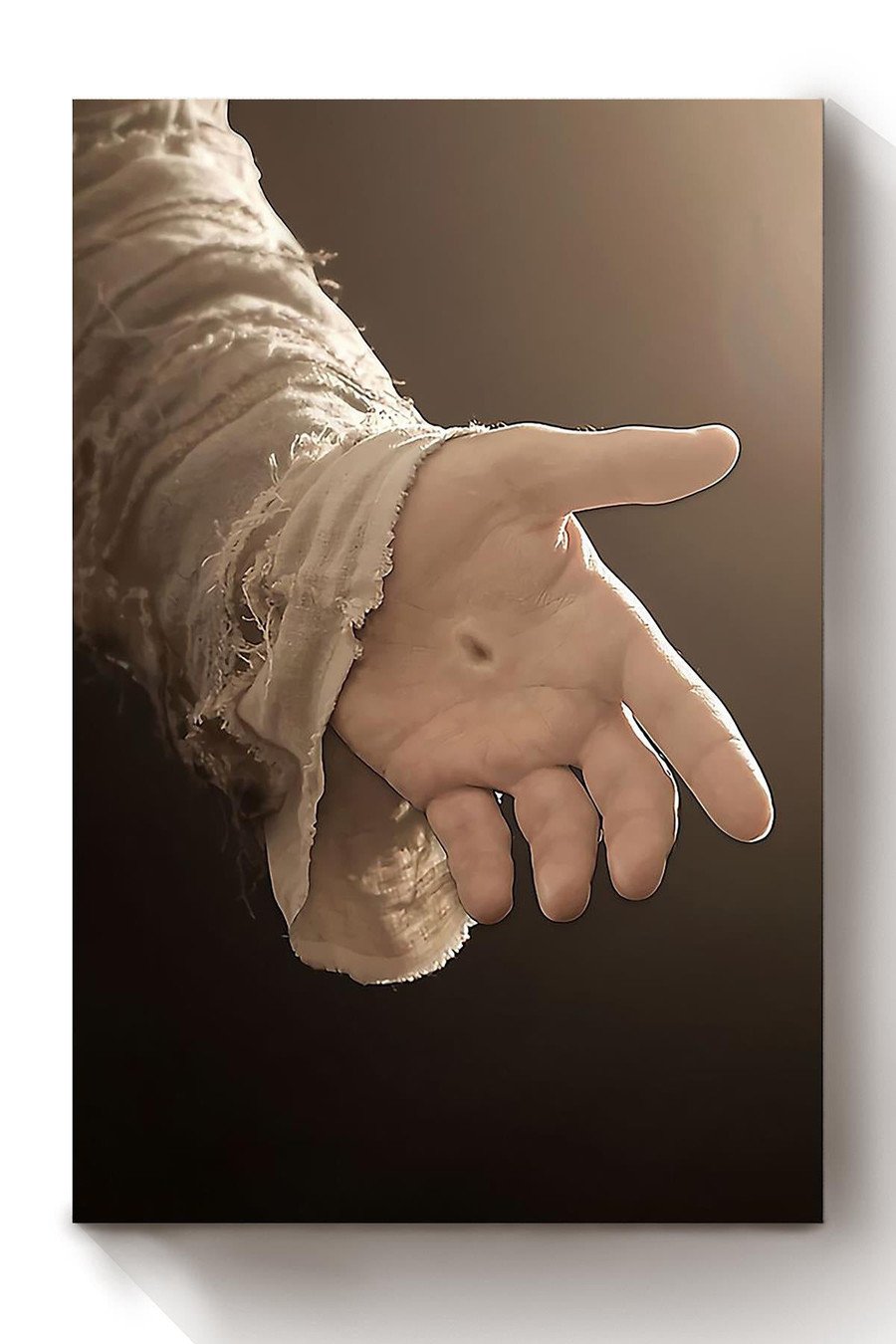A history of religious paintings
A popular subject for paintings throughout history has been religious figures and scenes. This is due in part to the fact that many stories from the bible are incredibly moving and provide a lot of material for an artist to work with. However, it is also because religious paintings often convey a sense of awe and wonder that can be very appealing to viewers. Over the centuries, artists have used a variety of different techniques to create their religious paintings. Some have used bright colors and intricate patterns to depict scenes from the bible, while others have opted for a more subdued approach. Regardless of the approach an artist takes, religious paintings can be very powerful and stirring.
Religious paintings throughout history
Art has been used to depict bible verses and other religious scripture since the earliest days of Christianity. Early Christian artists were faced with the challenge of how to represent a god who was invisible and transcendent. One solution was to use symbols, such as the lamb or the fish, which came to represent Christ. Another approach was to usegestures and body language to suggest divine power, as in the famous painting of the hand of God reaching down to touch Adam. Over time, artists became more comfortable depicting religious figures and scenes more realistically. In the Middle Ages, for instance, paintings of the Virgin Mary often showed her nursing the infant Jesus. These more naturalistic images allowed viewers to feel a connection to the divine. Today, religious paintings still play an important role in many cultures around the world. They offer a visual representation of faith that can be both inspiring and comforting.
The different techniques used by artists
Artworks can be created using a variety of different techniques. Some artists use traditional methods, such as painting or sculpture, while others experiment with more unconventional techniques, such as performance art or installations. No matter what technique an artist uses, they often seek to communicate a specific message or create a certain effect.
One popular technique that has been used for centuries is bible verse. Religious scripture can be used to create powerful and emotive artwork. For example, the bible verse "Love thy neighbor as thyself" has been used by artists to promote messages of love and tolerance.
Another technique that is often used by artists is light and shadow. By playing with light and shadow, artists can create dramatic and striking effects. For example, chiaroscuro is a popular painting technique that uses strong contrasts of light and dark to create a sense of depth and drama.
There are endless possibilities when it comes to creating art, and the techniques that artists use are constantly evolving. By experimenting with different techniques, artists can push the boundaries of what is possible and create truly unique and memorable works of art.
1) Realism
Realism is the belief that things are exactly as they seem to be. This philosophy is based on the Bible verse, "For we live by faith, not by sight" (2 Corinthians 5:7). Realists believe that religious scripture is the only reliable source of knowledge and that our sensory experience cannot be trusted. This view is supported by the fact that our senses can be deceived (e.g. optical illusions). Furthermore, realism is useful for making ethical decisions, as it takes into account the consequences of our actions. For example, a realist would not lie, cheat or steal, because they realize that these actions would have negative repercussions. Ultimately, realism is a sound philosophy that helps us to make sense of the world around us.
2) Symbolism
Symbols are an important part of many religious texts. In the Bible, for example, various objects and actions are assigned symbolic meanings. The act of breaking bread, for instance, is said to represent the body of Christ being broken for his followers. Similarly, water is often used as a symbol for cleansing or rebirth. Because symbols can be used to communicate complex ideas quickly and concisely, they play an essential role in religious teachings. By understanding the symbolism in religious texts, followers can gain a deeper understanding of their faith.
3) Pattern
A pattern is an element of design that is repeated in a piece of artwork or architecture. Patterns can be created using a variety of different media, including paint, stone, brick, mosaic tiles, and fabric. In religious art and architecture, patterns are often used to represent important biblical truths or scriptures. For example, the popular "fish" pattern found in early Christian art is actually a symbol for Jesus Christ. The Greek word for "fish" (ΙΧΘΥΣ) is an acronym for the phrase "Jesus Christ, Son of God, Savior art" Patterns are a powerful way to communicate messages and create meaning in art and religion.
4) Color
Colors play an important role in our lives. They can affect our moods, our emotions, and even our physical well-being. But where do colors come from? According to the bible, " In the beginning, God created the heaven and the earth. And the earth was without form, and void; and darkness was upon the face of the deep. And the Spirit of God moved upon the face of the waters. And God said, Let there be light: and there was light." This verse from Genesis tells us that light is the source of all color. Without light, we would see nothing but darkness. But when light shines on an object, we see its color. The color of an object depends on two things: the type of light that is shining on it and the way that object reflects or absorbs that light. For example, a red rose looks red because it reflects red light and absorbs all other colors of light. White objects reflect all colors of light, while black objects absorb all colors. By understanding how color works, we can use it to enhance our lives in many ways.
How religious paintings convey a sense of awe and wonder
Religious paintings often convey a sense of awe and wonder. One reason for this is the bible verse that says, "For God so loved the world that he gave his one and only Son, that whoever believes in him shall not perish but have eternal life." This verse conveys a message of hope and salvation, which can be deeply moving for viewers. Additionally, religious paintings often depict scenes from religious scripture, such as the birth of Jesus or the Last Supper. These stories are full of drama and emotion, which can captivate viewers and make them feel a sense of wonder. Ultimately, religious paintings offer viewers a glimpse into a world beyond our everyday experience, which can be both incredibly moving and deeply inspiring.
The power and stirring of religious paintings.
Many religious paintings throughout history have had a great influence on those who see them. The bible verse John 3:16 art states "For God so loved the world that he gave his one and only Son, that whoever believes in him shall not perish but have eternal life." This popular bible verse is often quoted and can be found hanging in many homes as a reminder of God's love. Other religious scripture, such as the Ten Commandments Art, can also be found painted on the walls of churches or homes. These paintings serve as a reminder of religious beliefs and values. They can also be a source of inspiration and hope for those who see them.
Conclusion
While religious paintings may vary in their content and style, they all have one thing in common: the ability to stir up powerful emotions in those who view them. Whether it's a painting of Jesus Christ or a scene from the Bible, these images can be incredibly moving and inspiring. They offer viewers a glimpse into a world beyond our everyday experience, which can be both exhilarating and deeply stirring. Religious paintings have been around for centuries, and they show no signs of disappearing any time soon. In fact, with the increasing popularity of art museums and galleries, it seems likely that religious paintings will only become more popular in the years to come.
FAQs
- What are the different techniques used in religious paintings?
Religious paintings often incorporate bible verses or other religious scripture into the design. This can be done in a number of ways, such as through calligraphy, symbols, or illustrations. In some cases, the bible verse may be the focal point of the painting, while in others it may be integrated into the overall design. Whatever the case, incorporating bible verses into religious paintings is a way to make the art more meaningful and impactful.
Another common technique used in religious paintings is symbolism. This may include using specific colors or objects to represent different concepts. For example, white may symbolize purity or goodness, while black may symbolize evil or sin. Symbols can also be used to represent specific bible stories or passages. For instance, a lamb may symbolize Jesus Christ, while a cross may symbolize his crucifixion. By using symbols, religious paintings can convey complex concepts in a simple and visually appealing way.
Religious paintings are often incredibly detailed and intricate. This is because they are meant to convey deep truths and messages. By taking the time to carefully create each painting, artists can ensure that their work will have a lasting impact on those who view it.
- Why do religious paintings evoke such strong emotions in viewers?
Bible verse- "For God so loved the world that he gave his one and only Son, that whoever believes in him shall not perish but have eternal life." John 3:16
This bible verse is widely known and recognized by people of many different religions. It is a reminder of God's love for humans, and it provides comfort to those who believe in him. Religious paintings often depict bible verses or religious stories, and they serve as a reminder of our connection to the divine. They can be deeply moving and emotional, providing a sense of comfort and peace. For many viewers, religious paintings are an important part of their spiritual practice, and they provide a sacred space for contemplation and prayer.
- How have religious paintings changed over time?
Religious paintings have changed significantly over time, often reflecting the shifting beliefs of the artist's culture. In Early Christian art, for example, Jesus was often portrayed as a lamb or a shepherd, reflecting the belief that he was the sacrificial Lamb of God who would lead his followers to salvation. Over time, however, Jesus came to be depicted more and more as a powerful figure, capable of performing miracles and governing his flock with authority. This change reflects the growing influence of the Bible and other religious scriptures on artists' understanding of who Jesus was and what he represented. Today, religious paintings continue to evolve, with new interpretations of biblical stories appearing all the time. As our understanding of religion changes, so too does our art.
- What is the significance of colors in religious paintings?
Colors have always been used to express emotion and convey meaning. In religious paintings, colors are often used to symbolize different concepts and ideas. For example, the color blue is often associated with heaven or spirituality, while the color red can symbolize passion or the blood of Christ. Green is often used to represent growth or life, while white can symbolize purity or innocence. By understanding the symbolism of different colors, we can gain a deeper understanding of religious paintings. bible verse says "And God saw that it was good." This bible verse is significant because it shows that even from the very beginning, God had a plan for everything. The colors in religious paintings often help to express this plan and bring it to life for viewers.
- What are some of the most famous religious paintings in history?
Throughout history, artists have been commissioned to create works that depict bible verses and other religious scripture. Some of these paintings have become famous in their own right, with millions of people gazing upon them each year. Among the most famous religious paintings are the Sistine Chapel ceiling by Michelangelo, which depicts the creation story from the book of Genesis, and "The Last Supper" by Leonardo da Vinci, which shows Jesus and his disciples sharing a meal prior to his crucifixion. These paintings are not only beautiful works of art, but they also serve as a reminder of the stories that have shaped our world.
SHARE:
Leave a comment
Address: 14111 Boony Ln, Garden Grove, CA 92843, United States
Email: support@aeticon.com
Support Hours: 8:00 - 18:00 Mon-Fri
Shop
Support
Policies

© 2024 Aeticon. All rights reserved.





